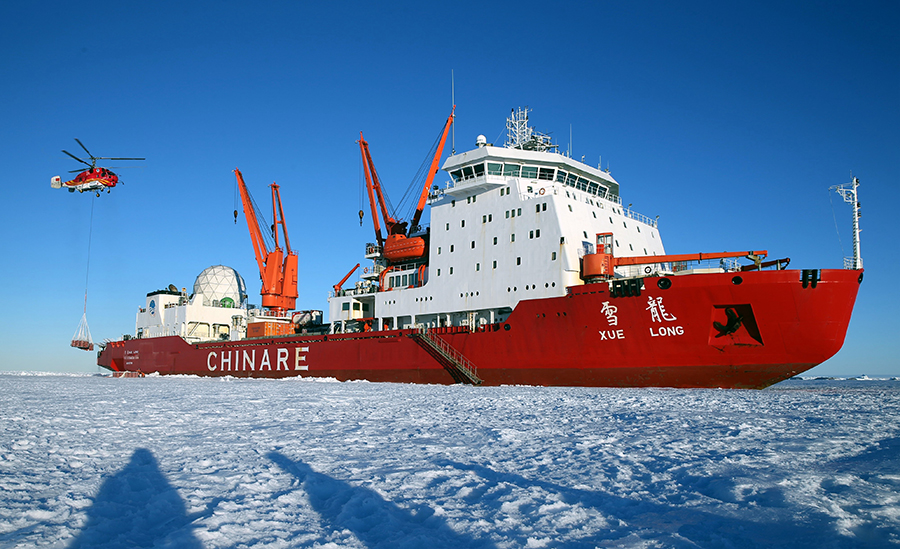Expert: Ship was blind when it struck iceberg


The radar equipment on Chinese icebreaker Xuelong cannot distinguish floating surface ice from an iceberg, which helps explain why the ship slammed into an iceberg in western Antarctica's Amundsen Sea on Saturday, an expert said.
The variable weather in the area was another factor, oceanographer Chen Dake told China Central Television. The vessel was caught in a sudden thick fog and the crew was only able to spot the iceberg at close range.
Xuelong is in stable condition now. It sailed out of the iceberg-dense area and resumed its voyage in the early hours of Tuesday, Beijng time, the Ministry of Natural Resources said.
The collision happened on Saturday morning, breaking the ship's mast and leaving about 250 metric tons of snow and ice on the front deck. It had been traveling at about 5.5 kilometers per hour and retreated immediately after the impact, China Central Television reported.
Part of the hull was damaged. Other facilities on board, including engines, navigation and the telecommunication systems, were unaffected. No injuries were reported, the ministry said on its website.
Shipborne radar is an effective tool in detecting obstacles in polar regions, but its ability to distinguish between floating ice and an iceberg is impeded by the signal, Science and Technology Daily reported.
"The Amundsen Sea is the place that experiences the most active melting and disintegration of Antarctic ice shelves," Cheng Xiao, dean of the College of Global Change and Earth System Science at Beijing Normal University, told the science publication.
The satellite imagery shows that the number of floating ice fragments has increased greatly since 2019. In 2018, the areas was a single large ice sheet. The change is believed to be the result of increased cyclone activity in the area, Cheng said.
The floating ice has also drifted to the north, pushed by the wind, which affected Xuelong's navigation, he added.
The ship was on its 35th Antarctic expedition, departing from Shanghai on Nov 2 with a crew of 351. Its missions have included building an airfield on the ice near Zhongshan Station, completing the second stage of Taishan Station, continuing the construction of the country's fifth research station near the Ross Sea and various marine observations and studies.
It is expected to return in April.
Xuelong entered the Amundsen Sea in early January for a marine survey but experienced "the worst sea conditions since departure", China Ocean News reported. The ship was pummeled by waves about 4 meters high, causing it to shake violently. Many crew members became ill.
The difficult ice conditions and active cyclones in the Amundsen Sea have vexed Chinese explorers for decades. It was not until March that China's 34th expedition successfully completed the first marine survey of the sea.
Xuelong is the only Chinese icebreaker in service, with China's first domestically built icebreaker, Xuelong 2, expected to enter service this year. Built in 1993 in Ukraine, Xuelong has been upgraded into a polar research vessel and has supported China's annual expeditions to Antarctica for more than 20 years.
- China launches new AI model for agriculture
- China introduces national standard for valuing terrestrial ecosystems
- Government agencies announce regulations of online hiring information
- Ministry pledges to continue solid waste disposal crackdown
- Shandong upgrades ancient canal shipping with smart tech and cleaner ships
- Night view of Central Street in Harbin





































